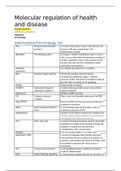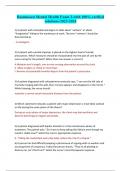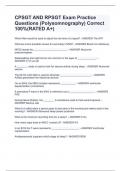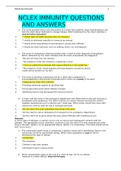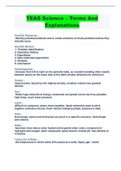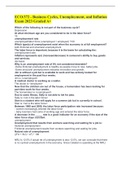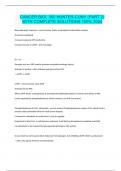Samenvatting
Summary Lectures, Reader and Knowledge clips - Molecular regulation of health and disease - HAP31806
- Instelling
- Wageningen University (WUR)
This is a summary of all notes from the lecture, the reader and the knowledge clips provided for the course HAP31806 - Molecular regulation of health and disease. It may seem like quite a large document however there are a lot of pictures and drawings included, mostly ones that I made myself. This ...
[Meer zien]
